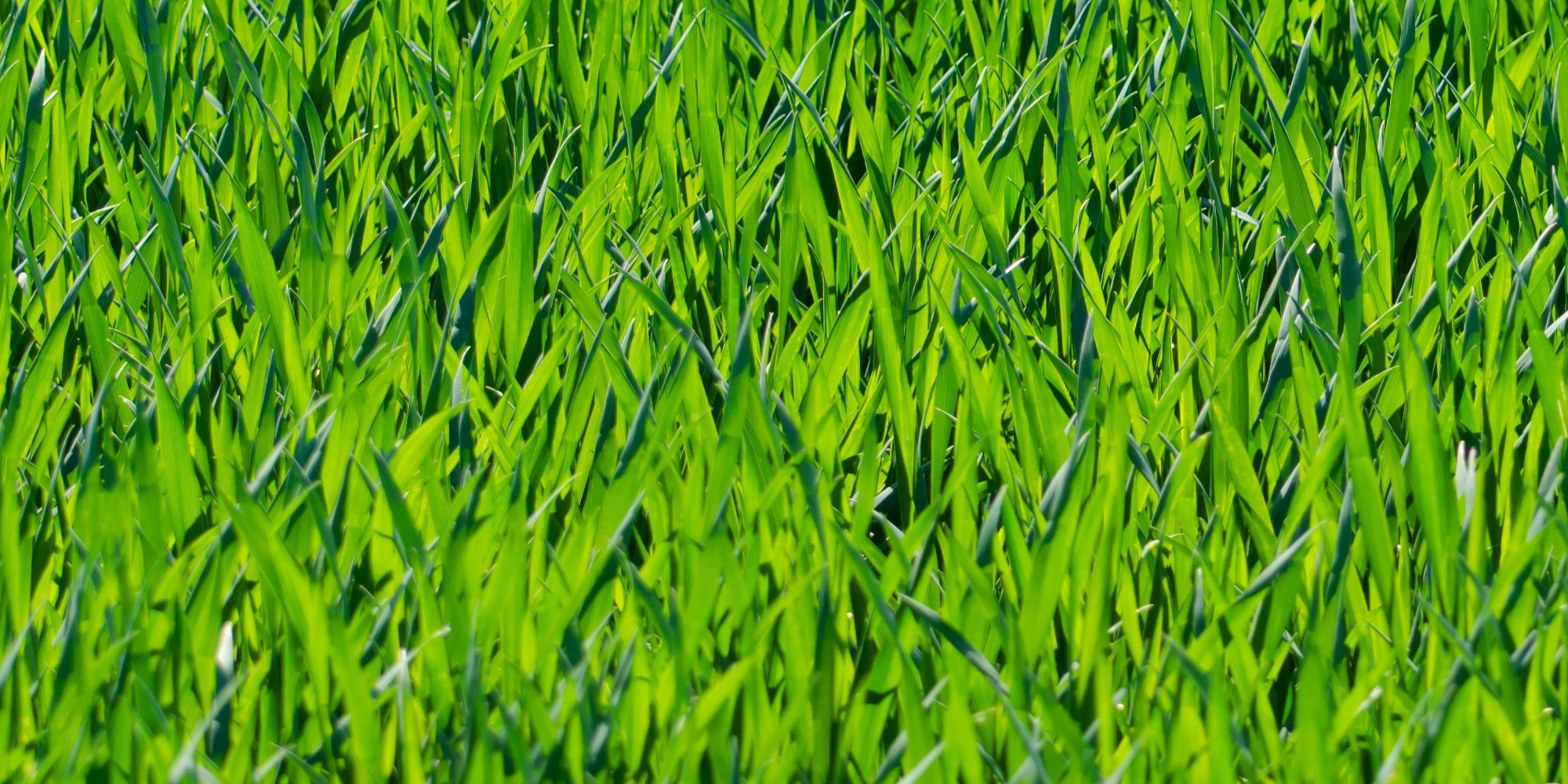Every wonder if there's a right or wrong way to mow your lawn? There's no clear-cut answer, but we have some nice tips.
Let's first start by taking about the different ways of mowing your lawn. First we'll talk about mowers and a few of the differences between the different mowers out there.
The best "cutting" action in a mower comes from a reel mower. A reel mower is one of the old-fashioned type mowers that basically operate like a pair of scissors cutting your lawn. Spiral blades mounted on a reel are turned quickly using some gearing from the wheels. Of course, these mowers need us as the muscle power to push the mower to drive the reel. The blades of the reel spin and the grass gets between the them and the bed knife which is stationary at the base of the mower. These are by far the best mowers for the perfect lawn. However, they also have a number of disadvantages. They don't cut weeds or broadleaf plants very well in the least (cover would probably be difficult with a reel mower). They also have a very hard time with very long grass. That means you often need to mow your lawn more often.
The other main mower for lawns is the rotary mower. These are your typical gas or electric powered mowers. The blades are shapened and spin at very high speeds, though their true cutting ability is somewhat limited. If you look at the end of a blade of grass cut with a rotary mower, you will see a jagged edge so there's a combination of cutting and ripping happening under the deck of your mower. However, this type of mower can deal with long grass and broadleaf weeds very well making it a good all-around mower for your average lawn. There are three modes in which rotary mowers work. As discharge mowers, mulchers, or rear-bagging mowers.
Side discharge has been the most common form for years where the cut grass is blown out the side into pseudo-windrows for the wind to take away. This works very well for the average lawn. If you mow your lawn often, you never need to worry about the clippings. If you don't and cut a very long lawn, you probably would need to rake the clippings up to prevent the clippings from smothering the existing grass.
A mulching mower typically has a slightly different blade and often a different deck on them. The principal of a mulching mower is to mow the lawn at the edge of the mower and deck and then use the inner portion of the mower and deck to push the clippings back down into the lawn. If the clippings are too large, they go through the cutting cycle again until they are small enough to get left behind. Although it may seem using a side-discharge mower and leaving the clipping on your lawn is the same as a mulching mower, but the blade design truly does chop the clippings into small enough bits you nearly can't see them.
A rear bag mower is effectively a side-discharge mower with a slightly different blade that has more "throwing" power to toss the clippings into a bag to collect and empty. Side-bag mowers work nearly the same but are wider than rear-bag mowers. Unless you really have a use for the clippings, there really is no good reason to use one of these mowers. Comparing a lawn that is cut with a mulching mower with one cut with a rear-bag mower over the span of a year will clearly show you the difference. Those clippings quickly break down and return nutrients back into the lawn. Collecting them removes those clippings.
Some mowers are able to mulch, discharge, and rear-bag all in one convenient package. This can be excellent choices when need multiple modes of operations. Three in one mowers can get expensive. Combination side discharge mowers and mulching mowers are more common and more economical. They are often all the average lawn needs.
Rotary mowers of all kinds are available as push-type or self-propelled. Self-propelled mowers are great for areas with steep ditches or hills, or even for those people who find pushing mowers difficult.
Now that we know how mowers work and we have an idea which ones are best for our yard, how long and how often do we mow our lawns? The length is a matter of preference, but the shorter you keep your lawn, the more often you will need to cut it. The golden rule of plant pruning is to never remove more than 1/3 of the leaf area. On a golf course, the putting greens can be as sort as 5/16th of an inch long and need mowing once a day, or more. A short 1 1/2" lawn needs mowing twice a week. A longer 2 1/2" lawn may only need mowing once a week. My personal preference is for a shorter lawn because it doesn't get floppy and you often end up with fewer weeds. At such a short length, many weeds can't produce flowers or seeds and will often die off getting cut so short all the time.
If you do keep your lawn nice and long, make sure to cut it shorter in the fall. Long grass in the fall can harbour insects and diseases over the winter so you need to start getting your lawn down to size about a month before freeze-up.
Last but not least, there really isn't such thing as a good looking lawn that you don't have to mow. Low-growing grasses aren't all that attractive in the average lawn and then often end up looking pale and shaggy. Sure, they will live, but nobody really wants a lime-green, shaggy, and unkempt looking lawn. To get the perfect lawn, you need to mow it regularly.

